| Linkker LM312 | |
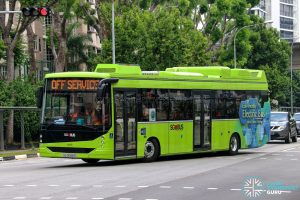 |
|
| Manufacturer | Linkker; Gemilang Coachworks |
| Bodywork | Linkker LinkLight + Gemilang Coachworks |
| Years in operation | 2021— |
| Operators | SBS Transit SMRT Buses |
| Technical Data | |
| Length | 12 metre |
| Powertrain | Linkker LinkDrive |
| Battery | 177.5 kWh LFP |
| Accessibility | Low Floor |
| Emission Standard | Zero tailpipe emissions |
The Linkker LM312 is a fully electric, low-floor single-deck city bus offered by ST Engineering Mobility Services, based on the Linkker 12 LF integral bus. Primary contractors include Finnish electric bus manufacturer Linkker for the electric drivetrain and bodywork structure, and Malaysian bodybuilder Gemilang Coachworks for the interior, final assembly and integration.
20 buses were procured by the Land Transport Authority in 2018 as part of efforts to build a more environmentally-friendly public bus fleet, as part of a tender awarded to ST Engineering Land Systems at a cost of S$15.148 million. In total, 60 electric buses were procured from three separate manufacturers. These buses are also the first public buses in Singapore to be capable of opportunity charging (i.e. quick charged via overhead pantographs at bus interchanges), the cost of which was included in the tender sum.
All 20 buses were registered between 13 July–13 August 2021. The first unit (SG3088R) was registered to SBS Transit on 13 July 2021, while the first unit for SMRT Buses (SG3073H) was registered on 19 July 2021. All units entered service in late August 2021, having been delayed from 2020.
An autonomous variant of this bus (STROBO Series 12 Bus) is used for ST Engineering research and development.
Background
ST Engineering Background (Click to expand) ST Engineering is a Singapore-based integrated engineering group dealing in the aerospace, electronics, land systems and marine sectors; primarily engaging in defence applications. The company’s Land Systems division, ST Engineering Mobility Services (formerly ST Kinetics, then ST Engineering Land Systems) is established in the local bus industry as the local distributor for MAN buses (MAN A22, MAN A24 and MAN A95), of which many entered service in Singapore since 2011. The company has also produced a 3-door concept single-deck bus (SG4002G) and a 3-door concept double-deck bus (SG5999Z), both of which commenced revenue service trials in 2017, and had refitted an existing diesel bus to an electric bus as a proof-of-concept (SG3100M). ST Engineering also secured an LTA contract for 3-door Euro 6 double-deck buses and is working with LTA to develop and trial fully-autonomous buses in the future. For the bus industry, ST Engineering typically works with different manufacturers for fabrication and systems development. It has marketed city buses on MAN and Linkker platform (most frequently with Gemilang Coachworks bodywork) and used Yinlong and BYD vehicles as platforms for autonomous vehicle development. ST Engineering is also the Asia Pacific distributor for Linkker electric buses. Finland-based bus manufacturer Linkker builds electric city buses based around the Opportunity Charging concept. Apart from selling whole buses (i.e. completely-built-up; CBU), Linkker also manufacturers retrofit kits for other bus bodies, which mainly consists of the electric drivetrain (branded Linkker LinkDrive) and other peripheral equipment. Linkker had previously tested its buses domestically (in Helsinki, Espoo, Turku) and overseas in Copenhagen and Moscow. Electric motors and inverters are supplied by Danfoss, a Denmark-based engineering group. For the Linkker LM312, the bus is based on the Linkker 12 LF low-floor city bus offering, configured in right-hand drive and with three passenger doors. Unlike Linkker 12/12+ units operating in Europe, local units bear a unique front and rear bodywork design characterized by asymmetric front and rear body panel designs. The bus also uses 19.5-inch diameter tyre rims, which are perceptibly smaller than the 22.5-inch tyre rims on most buses. Linkker supplied the chassis and the aluminium body structure (branded Linkker LinkLight) from its facility in Villähte, Finland. Final assembly and integration was performed in Senai, Malaysia by Gemilang Coachworks, who also supplied the front and rear body panels, and performed the interior outfitting works. It is believed that one bus was supplied by Linkker to Gemilang in semi-knocked-down (SKD) form as a design reference, with the remaining 19 buses delivered as completely-knocked-down (CKD) kits. More bodywork details are discussed in the later sections of this article. The factsheet provided by the Land Transport Authority in August 2021 refers to the bus as the Linkker ST12MSD, which is likely to be the working name for the bus. In addition, Linkker also refers to the bus as a Linkker 12LF, possibly in reference to the original drivetrain. The STROBO Series 12 Bus, also built by a partnership of ST Engineering/Linkker/Gemilang Coachworks, bears a similar bodywork design with additional roof attachments. Like the STROBO Series 12, these buses are OppCharge-compatible, fully-low-floor and equipped with three doors for more efficient passenger movement. Find out more about Electric Buses in Singapore here. Twenty units of the Linkker LM312 were procured. They were built using electric drivetrain components and an aluminium bodywork structure from Linkker (Finland), with interior furnishings and final assembly by Gemilang Coachworks (Malaysia). A similar electric drivetrain was also fitted to the ST Engineering Retrofitted Electric Bus and the ST Engineering STROBO Series 12 autonomous bus. Daytime running lights were spotted on some buses back in February 2020. However, these were removed prior to the commencement of revenue service in August 2021. Buses are registered from SG3070R to SG3089M. SG3085Z, SG3086X & SG3088R are fitted with the Eco-Friendly Electric Bus wrap. The wrap on SG3085Z & SG3086X was observed to be smaller than that of SG3088R. Other buses had their wrap pasted on progressively in March 2022. According to an online report, Linkker reportedly built one unit in Finland as a “driven body frame” (directly translated), and the remaining nineteen units were assembled by Gemilang Coachworks in Malaysia using completely-knocked-down (CKD) kits. The “driven body frame” referenced in the report is likely a semi-knocked-down (SKD) bus that was delivered from Linkker to Gemilang Coachworks (transited through Singapore in September 2019) with only the chassis and body frame. This unit was likely used by Gemilang as a reference for the assembly of the remaining 19 units. The passenger cabin of these buses is designed and built by Gemilang Coachworks. The design theme and interior furnishings used on the Linkker LM312 buses (flooring, panels, grab poles, seat upholstery, etc.) are very similar in design to other Gemilang-bodied buses for the Singapore market (eg. MAN A22, MAN A95, BYD K9, etc.). Gemilang is known to have been involved in designing the STROBO Series 12 bodywork as detailed in a Gemilang promotional video (since removed from YouTube) and its publication of this brochure, wherein many design elements were carried over to the twenty Linkker LM312 buses. Gemilang has since acknowledged its role in designing and building these buses on various social media channels. As a whole, the execution of the Linkker LM312 buses mirrors that of the STROBO Series 12 autonomous bus commissioned by ST Engineering over a year prior. The bus was also delivered from Linkker to Gemilang in SKD form and spotted transiting through Singapore. Gemilang performed the final assembly work, inclusive of the design and construction of the bus’ interior. Unique front and rear panels of the bus not present on the SKD bus was also likely supplied by Gemilang, a feature that was carried over to the Linkker LM312 buses as well. It is noted that the Linkker LM312 has opted for Lithium Iron Phosphate (LFP) batteries, which differ from two existing Lithium-ion battery options offered with Linkker 12 LF buses (LTO and NMC batteries). Omitting in-depth technical comparisons between the three, LFP batteries are relatively cheaper, less toxic, and typically last longer as compared to other forms of Lithium-ion batteries. LFP batteries have also been widely adopted for electric buses, with the world’s leading electric bus manufacturers by sales volume (Yutong, BYD and Zhongtong) opting for LFP batteries. Overhead pantograph chargers were also installed at two bus interchanges (Bukit Panjang ITH and Bedok ITH) to support the daily operations of these buses. Each 450 kW charger allows electric buses to be quickly recharged during their short layover time of 10 to 15 minutes at bus interchanges. See also: Overhead chargers for electric buses in Singapore The 20 Linkker LM312 buses are registered as SG3070R – SG3089M. These buses are leased to the following operators: Revenue service commenced on the afternoon of 25 August 2021, after a launch event in the morning attended by Minister for Transport S Iswaran. Buses were deployed on bus services 38, 40, 176 & 976. Based on the concept of Opportunity charging, the Linkker LM312 is charged at the terminus of a bus route, where charging points (typically overhead charging) are erected. The bus is sufficiently recharged in a short amount of time (usually several minutes) before the bus continues on its next trip. With fewer batteries required per bus, its advantages translate to a more spacious bus interior, lower environmental cost of battery production, and lower electricity consumption through reduced vehicle weight. Its disadvantages include the lack of deployment flexibility (unable to be deployed on non-infrastructure-equipped routes) and the possible impact on bus operations should a charging station break down, and some redundancy is thus required, such as installing multiple chargers at terminating points. Currently, efforts are focused on expanding the use of opportunity charging on suitable routes and the adoption of similar charging infrastructure between bus manufacturers, allowing multiple bus models to use the same charger. The Opportunity Charging approach is favoured by European bus manufacturers. Conventional, depot-charged buses carry a large number of batteries on every bus to achieve sufficient operating range over a day’s worth of revenue service, and this is the approach preferred by Chinese bus manufacturers. The Linkker LM312 buses are charged via overheard pantograph, based on the opportunity charging (OppCharge) platform. OppCharge is an open and competition-neutral interface seeking to accelerate the adoption of electric buses by being compatible with multiple bus manufacturers, hence offering operators choice and flexibility of buses without the need to modify existing charging infrastructure. These overhead pylon chargers with extendable pantographs are usually installed at the end stops of bus routes, allowing buses to quickly receive a full charge in-between trips. Charging is fully automatic and secured by a two-way WiFi communication sequence. The driver gets a clear indication in order to stop within the specified ± 200 mm from the reference point. In normal OppCharge applications, the charging sequence is started by activating the parking brake, and the driver can interrupt it at any time. However, for the Linkker LM312 buses in Singapore, it is understood that the pantograph is lowered by the Bus Captain using a button on the dashboard. Swiss-Swedish engineering group ABB supplied four 450 kW chargers with installation, civil works, project management and commissioning. According to ABB, these chargers would allow the electric buses to be quickly recharged in less than ten minutes at key bus interchanges with an automated rooftop connection. A similar overhead charger was installed at Cleantech Park in support of the NTU-LTA-Volvo Autonomous Bus Trial. The Volvo 7900 Electric bus participating in the trial is OppCharge-compatible and is recharged with the ABB HVC 300P fast-charge system, which delivers 300 kW DC power. Two overhead pantograph chargers were each installed at Bukit Panjang Integrated Transport Hub and Bedok Integrated Transport Hub. In practice, only one charger was observed to be in use at any one time, with the other charger appearing to act as a backup. See also: Installation of overhead bus chargers at Bedok and Bukit Panjang The Linkker LM312 exterior design features a striking design defined by assymetric lines on the front and rear of the bus. The bus also uses 19.5-inch diameter tyre rims, which are perceptibly smaller than the 22.5-inch tyre rims on most buses. The roof of Linkker LM312 buses houses additional battery packs, an air conditioning unit, as well as contact rails for opportunity charging via pantographs. Interestingly, the high voltage electrical cables are left exposed to the elements, rather than being concealed in some form. A directional Wi-Fi antenna is also mounted on the right of the overhead charging rails. This is used for two-way communication between the bus and the overhead charger. The Linkker LM312 is a low-floor single deck bus, offering step-free access across the entire length of the bus. It features a three-door configuration, with an entrance door at the front, an exit door in the middle, and a second exit door at the very rear of the bus. The bus features 28 seats, 2 wheelchair bays and licensed standing space for 55 passengers. The Linkker LM312 features an unusual proportion of rear-facing seats, with 12 out of 28 seats being rear-facing. This could be due to design challenges faced due to the position of the third door . The bus features two wheelchair bays, both located opposite the exit door. They each accommodate one passenger-in-wheelchair (PIW), and are equipped with USB charging ports. Foldable armrests and a stroller restraint system is provided for wheelchair users and the securing of prams respectively. Door systems are supplied by Masats and are identical to those used on Gemilang-bodied buses for Singapore. The partnership was indicated in ST Engineering’s 2017 Annual Report, referred to as a “partnership with an Original Equipment Manufacturer (OEM) for electric buses to distribute electric buses in right-hand drive countries in Asia Pacific, including Singapore, Australia, Hong Kong, Indonesia, Malaysia, New Zealand and Thailand”. This article was initially titled ST Engineering Electric Bus, later changed to ST Engineering/Linkker Electric Bus upon knowledge of Linkker supplying ST Engineering with drivetrain components. Updated title ST Engineering/Linkker Electric Bus (Linkker 12 LF) in reference to a Linkker presentation that referred to the bus’ autonomous variant as a Linkker 12 LF, featuring the same right-hand-drive, three-door, low-floor layout. Updated title Linkker LM312 reflects the final model name that the bus is registered under, as confirmed via OneMotoring (13 July 2021). Back to Bus Models
Linkker LM312
Basic Technical Specifications
Driveline
Linkker LinkDrive electric driveline
Electric Motor
Danfoss Editron EM-PMI375-T800-1600
Permanent Magnet assisted Synchronous Reluctance Motor (dual inverter)
Continuous power/torque of 139 kW / 828 Nm
Maximum power/torque of 231 kW / 2100 Nm
Battery
Lithium Iron Phosphate batteries (177.5 kWh)
Opportunity charging via inverted pantograph (Oppcharge) with secondary CCS2 plug-in charging capability
Up to 450 kW DC charging input
Bodywork
Linkker LinkLight / Gemilang Coachworks bodywork
Lightweight aluminium unibody construction; full-low-floor layout with 3 doors
Final assembly by Gemilang Coachworks in Malaysia
EDS
Luminator ULTIMA Electronic Display Sign (EDS)
Orange LED Matrix design. Luminator Basic driver controller.
PIDS
Luminator INFOtainment Passenger Information Display System (PIDS)
Interior-facing unit (29”) and exterior-facing unit (21.5”)
Interior & Exterior Speakers
ADAS
ST Engineering DriveSafe Advanced Driver Assistance System (ADAS)
AFS
TNT Surveillance anti-fatigue system (T-DA Driver Alert Camera)
APCS
TNT Surveillance T-APC automatic passenger counting system
Passenger Capacity
28 Seated + 55 Standing = 83 Passengers
2 Wheelchair Bays
Other Specifications
Eberspächer Sütrak AC136 G4 AE electric air-conditioning system
Vogel Industrie System 750/3 seats
Masats door systems
USB charging ports
Stroller restraint system
Rooftop charging rails for inverted pantograph charging (Oppcharge)Bodywork matters
Battery matters
Linkker 12 LF legacy offerings
Linkker LM312 offered battery
Fleet
SG3088R (Registered on 13 Jul 2021)
SG3070R SG3089M (Registered on 22 Jul 2021)
SG3071M SG3072K SG3080L (Registered on 27 Jul 2021)
SG3078U SG3079S SG3081J SG3082G (Registered on 5 Aug 2021)
SG3073H (Registered on 19 Jul 2021)
SG3074E SG3084B (Registered on 23 Jul 2021)
SG3075C SG3085Z SG3086X (Registered on 30 Jul 2021)
SG3076A SG3077Y SG3083D SG3087T (Registered on 13 Aug 2021)Rollout
Opportunity charging
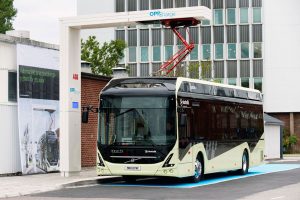
Overhead pantograph
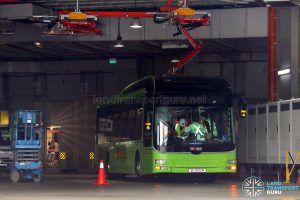
Exterior
Roof
Interior
Wheelchair Accommodation
Three Passenger Doors
Third Door area
Bus Captain Cabin
Gallery:
Annexe – ST Engineering Partnership
ST Engineering-Linkker Partnership (Click to expand)Annexe – Article titles
ST Engineering-Linkker Projects:
External Links & References:
Back to Bus Articles
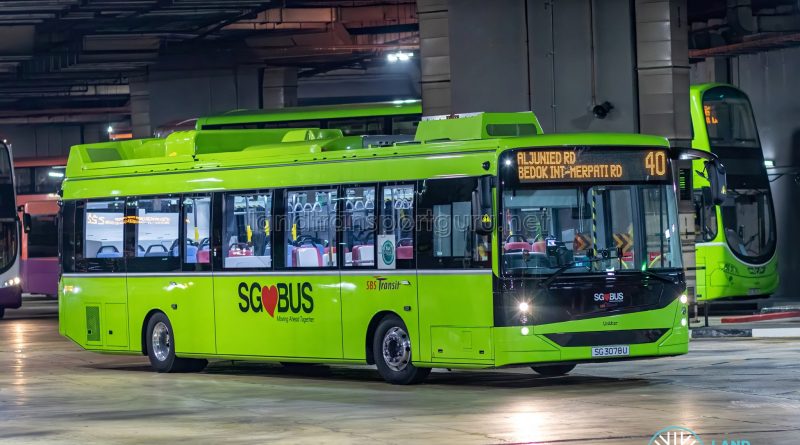
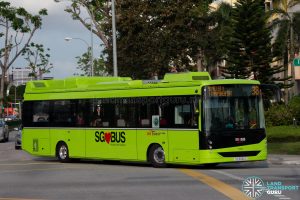
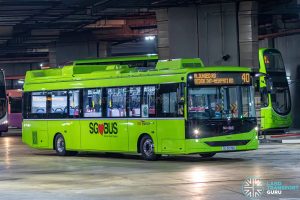


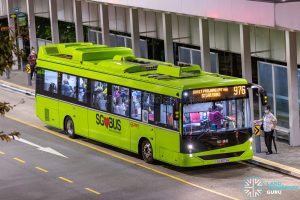

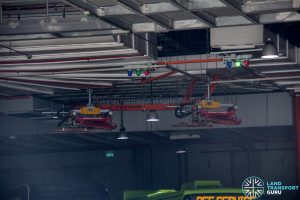
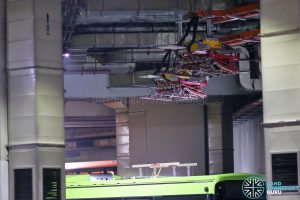
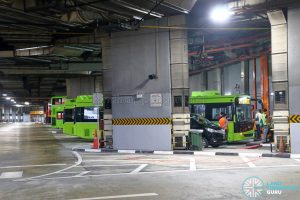

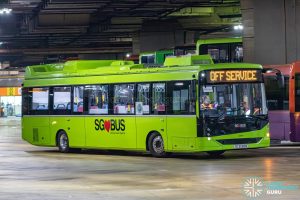
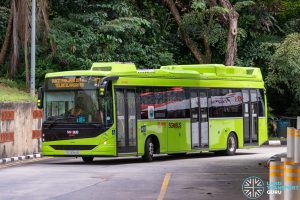
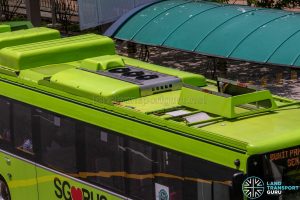
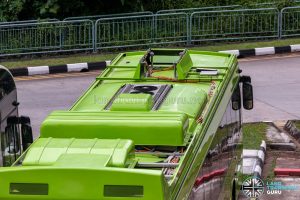
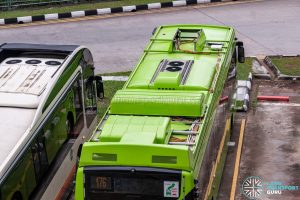
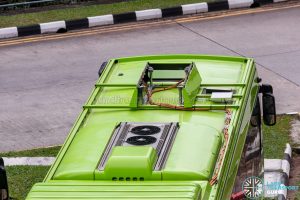
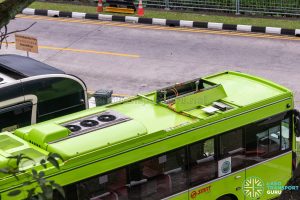
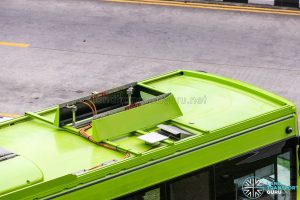


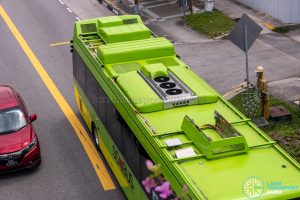
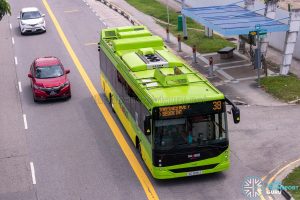
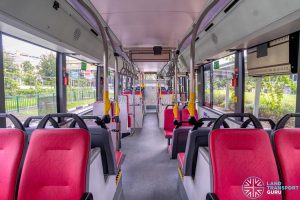
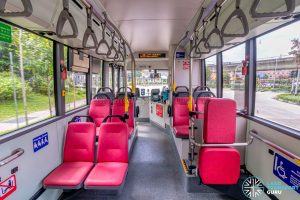
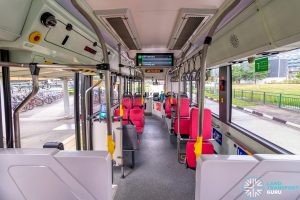
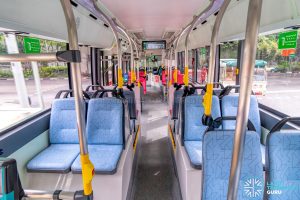
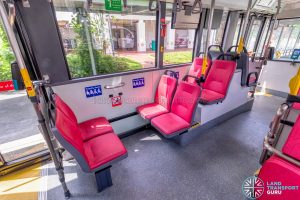
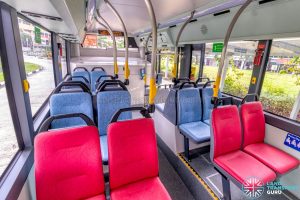

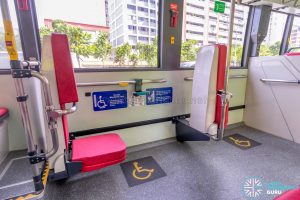
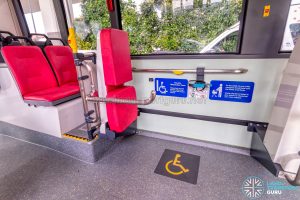
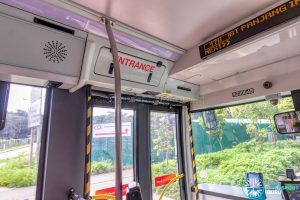
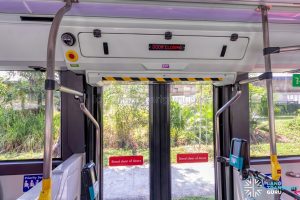
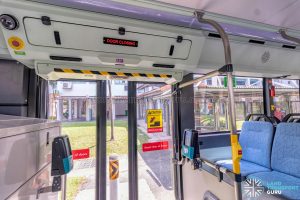
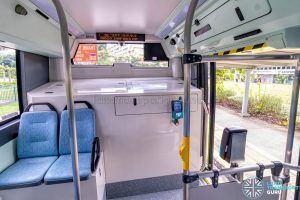
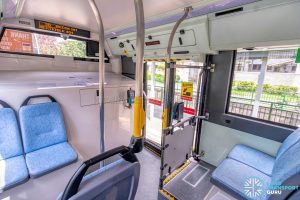
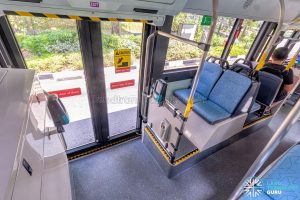
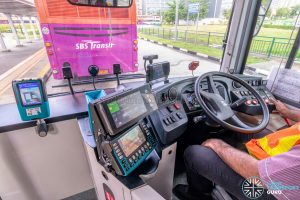

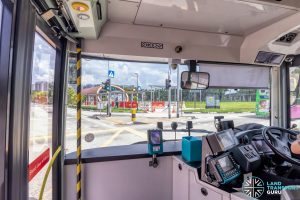
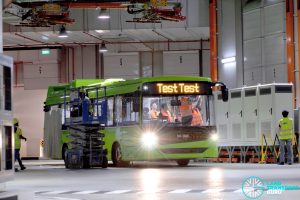
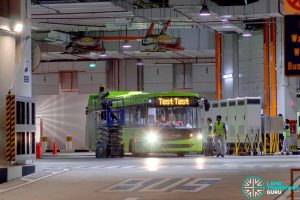
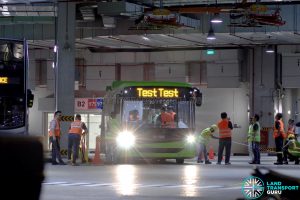
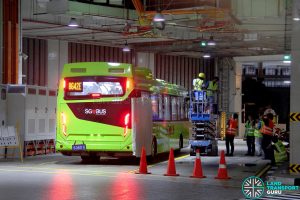
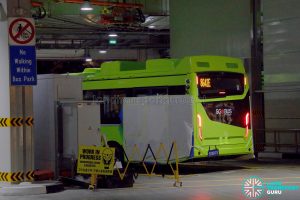

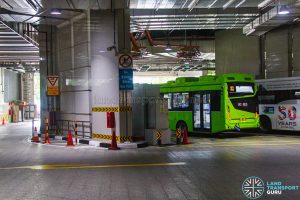
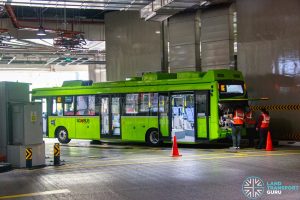
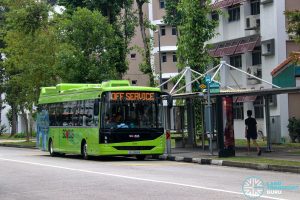
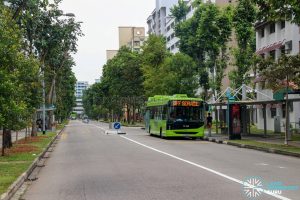
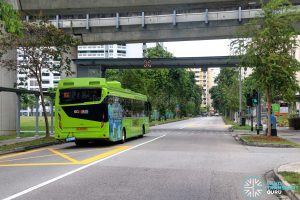
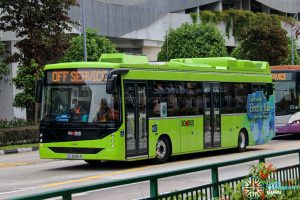
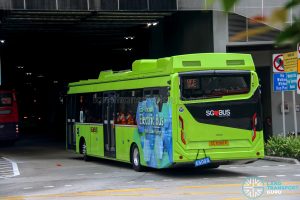
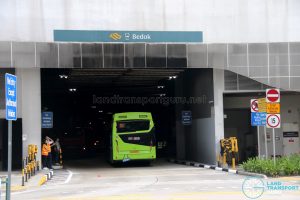
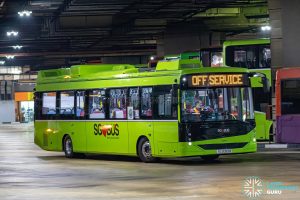
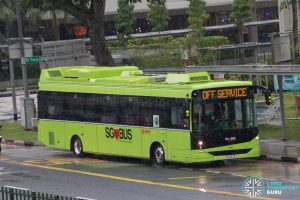
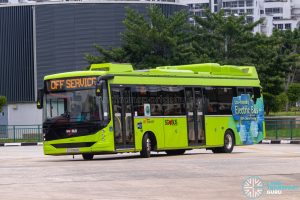
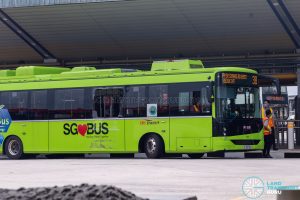
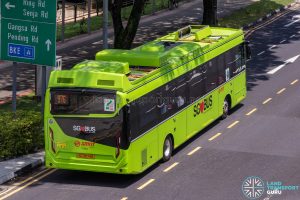
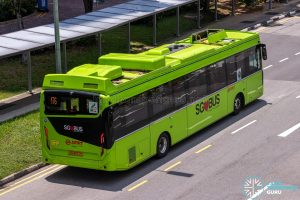
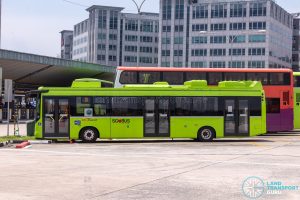
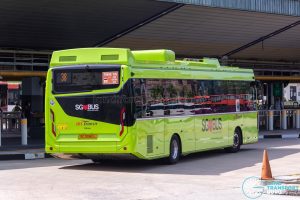
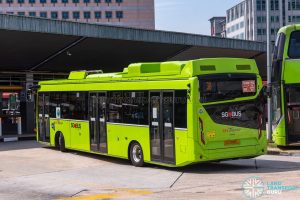
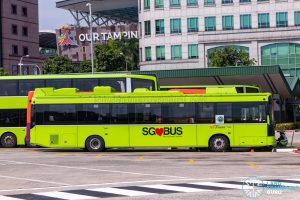
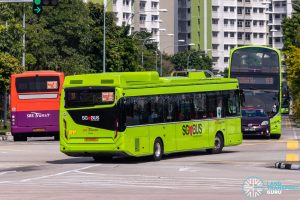
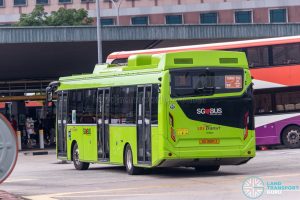
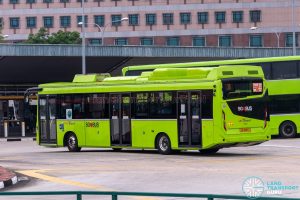
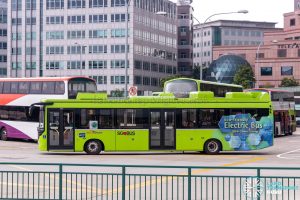
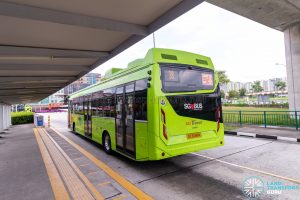
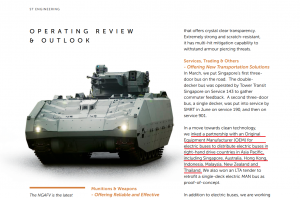
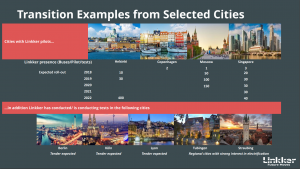
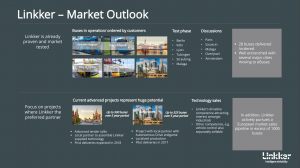
SMRT Linkkers are at WLBP
Actually SBST can consider depolying it on 33 ,45 or 109 as well. This services also experience high bording & alighting along most of its route.
45 and 109 don’t go to Bedok Interchange lor.
Haha oh ya. I forgot i keep thinking of bndep. Than i guess 33 will be choice to think about.
So the most obvious candidate for this bus would be Service 38 or Service 9 since it is registered for SBST and the only location for the pantograph charging is at Bedok Interchange…
If based on the route training, Service 9 and Service 38 likely candidates. However, I foresee BNDEP Feeder/Townlink services serving Bedok Interchange may have a higher chance to use this bus
40 though
Saw it a few times on service 38 route doin trainning.
the bus went testing on route 176 last friday
Saw this bus on 38 too.They are the Most Likely candisates to Use this bus to Deploy On Service 38.Service 38 are most likely Candidates to Use this Bus to Serve Passengers of Simei Residents.And Saw it at Simei Street 3/4